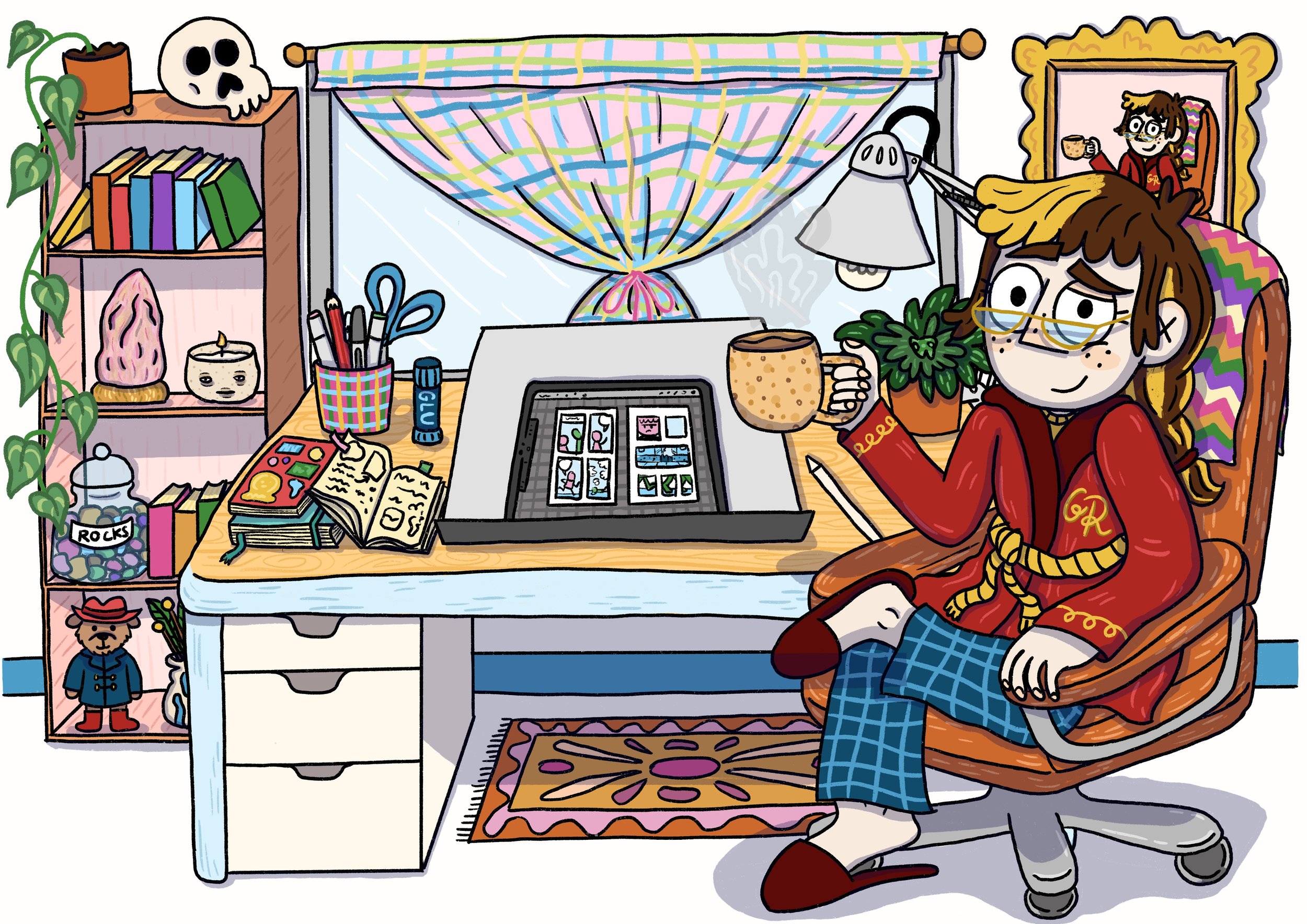You may have noticed that in the past few posts I've been writing about going through a bit of a flat patch or, if you want to go all '50s horror movie on the idea, 'The Slump!'
So with The Slump hanging over my head -- or more specifically in my head -- I thought it was time to get my thoughts out onto paper. I grabbed a book I've been using to keep track of thoughts and things to talk about with my mentor Pat and started writing what I'd been feeling. BUT THEN I COULDN'T STOP. It just kept coming out. Because this was originally just going to be something that I would send to Pat and not share online, I didn't pencil anything or even plan what I was going to write. Sometimes I think I managed to pull it off and then some pages maybe not so much. Anyway, here it is, in all its glory.
Halfway through writing these thoughts I kinda wanted to stop. I wasn't really sure where they were going and not knowing when the comic would finish made me start feeling flat. But I pushed through with a few pitstops to breathe and think about what I was writing and once I'd finished (despite it not being the best thing I've ever drawn or written) I was so glad to have done it.
Even though I would say the process of making something is maybe sometimes more important than the final product, it sure feels good to hold a finished thing in your hands. Even if the very next day you think it's terrible.
Hope you guys are doing well. Can't wait to write you again real soon!
Gxx




















































































































































